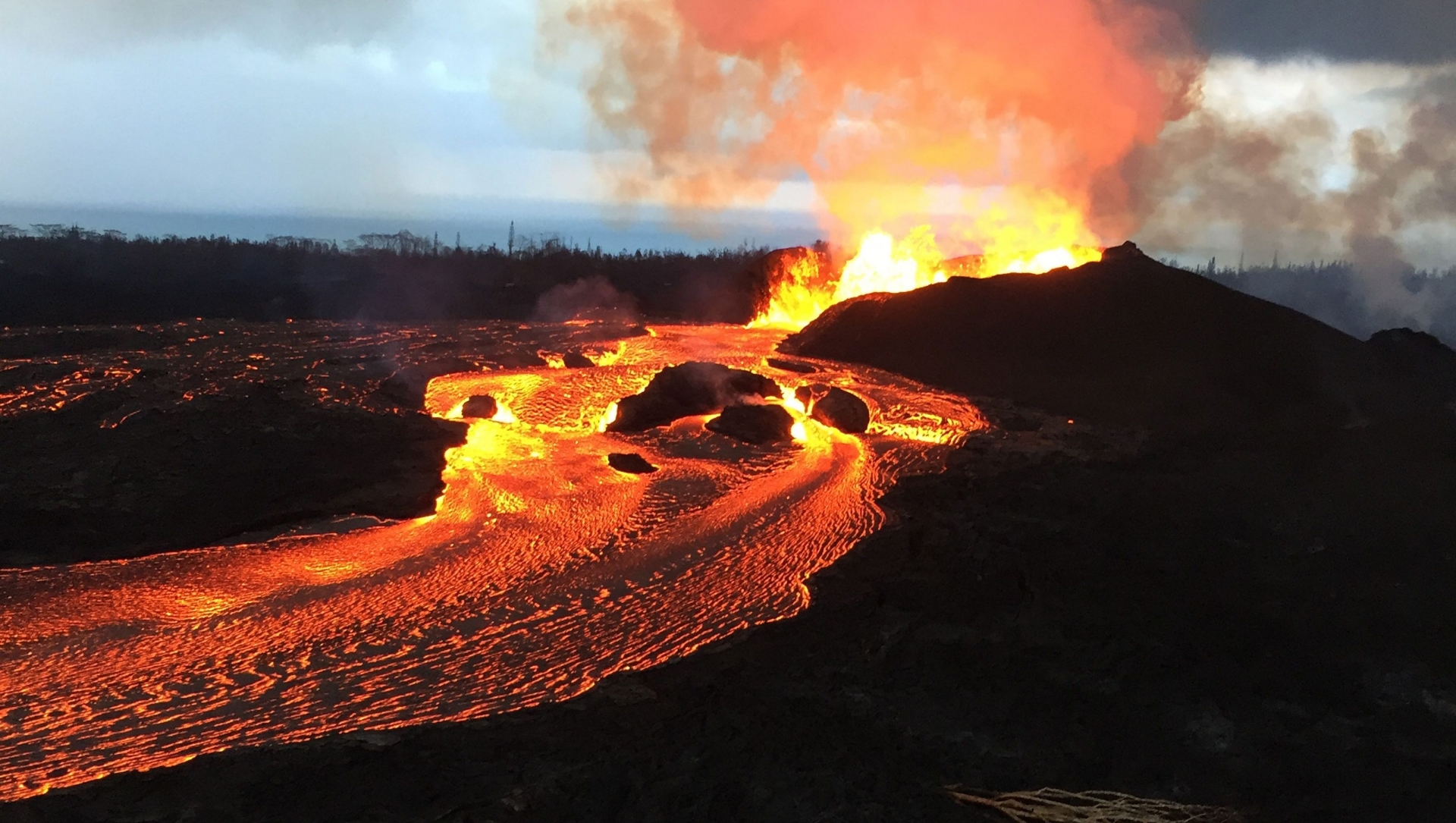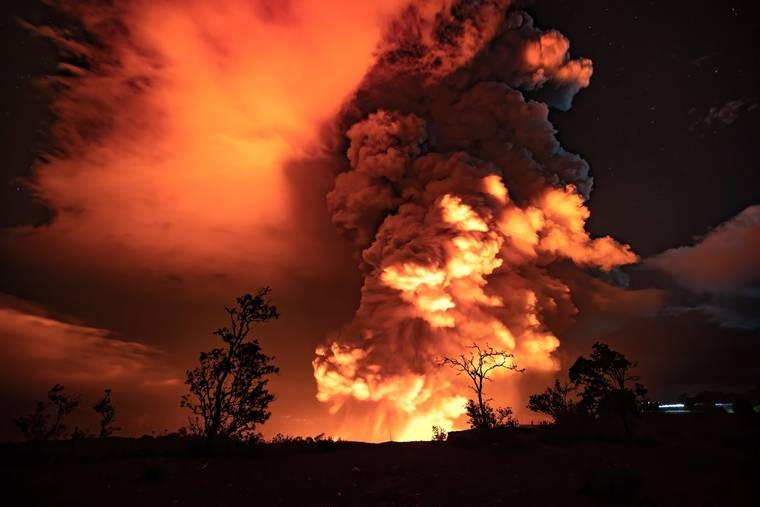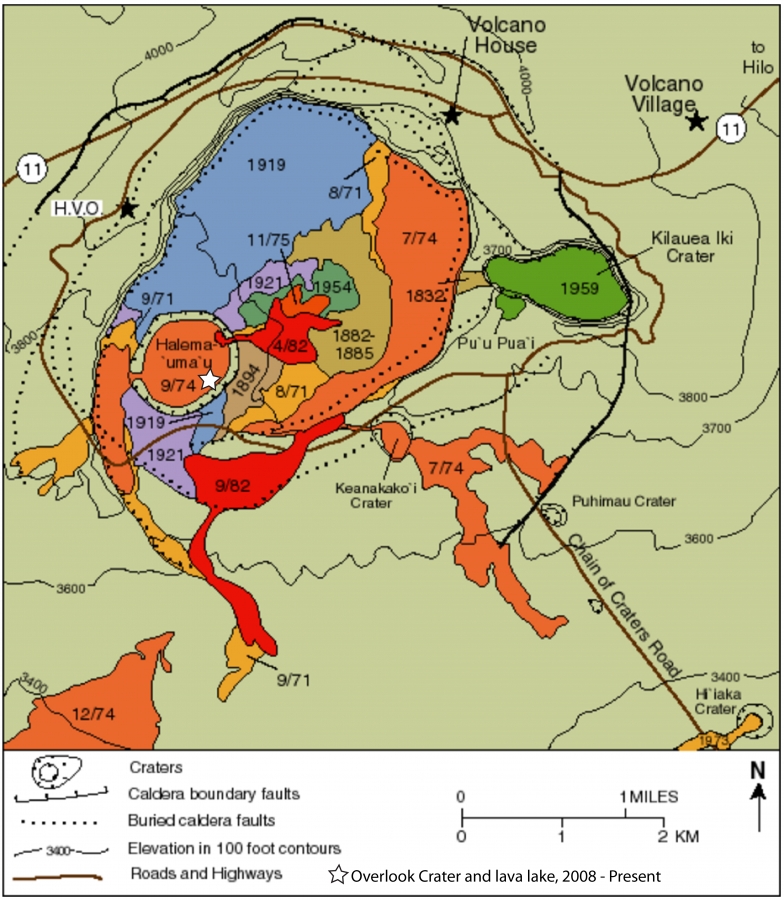Kilauea Volcano: Facts, Historical Erupt and Current Situation
 |
| Kilauea Volcano Activity Update 2020. Photo: Live Science |
Historical Eruptions at the Kilauea volcano have occurred from both the summit caldera and from vents along the East Rift Zone. The historical record began with a very explosive phreatomagmatic eruption in 1790. After this, the volcano was almost continuously active, mostly showing gentle effusion from a lava lake at the summit until 1924, when it again erupted explosively. The period 1924 to 1955 saw mostly short-duration summit eruptions. From 1955 to the present Kilauea has seen mostly East Rift Zone activity interspersed with small summit eruptions. Two notable rift eruptions were Mauna Ulu (1969-1974) and Pu`u `O`o (1983-present).
Kilauea volcano
Shield volcano 1277 m (4,190 ft)
Hawai'i, 19.41°N / -155.29°W
Current status: erupting (4 out of 5)
Last update: 22 Dec 2020 (lava flowing from a fissure inside Halema'uma'u crater forming a new lava pond)
Kilauea is the youngest and most active Hawaiian shield volcano, located on the southern part of the Island of Hawai'i, known as Big Island. Hawai'i is the southernmost and largest of the island chain, which owes its existence to the very active Hawaiian hot spot, according to Volcano Discovery.
Kilauea volcano is near-constantly erupting from vents either on its summit (caldera) or on the rift zones. At present, the Kilauea volcano is still having one of the most long-lived eruptions known on earth, which started in 1983 on the eastern rift zone and has mainly been concentrated at the Pu'u 'O'o vent.
Activity Summary
Kīlauea Volcano is erupting. At 9:30 p.m. HST on December 20, the USGS Hawaiian Volcano Observatory (HVO) detected a glow within Halemaʻumaʻu crater at the summit of Kīlauea Volcano, indicating that an eruption had commenced within Kīlauea's summit caldera. Due to the presence of the water lake at the summit of Kīlauea and the potential for steam-driven explosions and related hazards, HVO elevated Kīlauea's volcano alert level to WARNING and its aviation color code to RED on December 20 as the progression of events was uncertain, National Park Service reported.
 |
| Photo: West Hawaii Today |
The water lake at the summit of Kīlauea has boiled away and an effusive eruption has commenced, with vents in the wall of Halemaʻumaʻu crater generating lava flows that are contributing to a growing lava lake at the base of Halemaʻumaʻu crater. The eruption is currently confined to the Halemaʻumaʻu crater.
HVO has decreased Kīlauea's volcano alert level to WATCH and its aviation color code to ORANGE, reflecting the less-hazardous nature of the ongoing eruption.
As of about 4:45 a.m. HST on Dec. 22, the HVO field crew noted that the lava lake rose 3 meters in 3.5 hours. The lake surface is now 487 m (1598 ft) below the crater rim observation site, indicating that the lake has filled 134 m (440 ft) of the bottom of the Halema‘uma‘u crater. This is more than double the depth of the water lake that was in the crater until the evening of Dec. 20 when it was vaporized. Fountaining continues at two locations, more vigorously at the eastern vent, and both vents continue to feed the growing lava lake.
| Eruption goes on, lava lake growing Update Tue 22 Dec 2020 The new eruption continues at a steady pace: during the first day of activity, lava effusion focused on only one of the initially 3 fissure vents in the lower crater walls, something that is often the case as the rising magma tends to exploit the best-available path, now clear of obstacles. The lava effuses from the active fissure with little explosive interaction into a flow that continues to fill the growing lava pond at the bottom of the crater. Once the vent is submerged, we might be able to adore another true lava lake in Halema'uma'u! |
Background
Kilauea volcano, a youthful shield volcano, sitting on the southeast flank of the massive Mauna Loa shield volcano, is the youngest volcano (on land) of the Hawaiian hot spot and not only the most active volcano of Hawaii but at the same time also the world's active volcano. It has been in near-constant activity since there is oral or written history and it is having an uninterrupted eruption since 1983 (at present at the Pu'u 'O'o vent on the East rift zone).
 |
| Historial eruption deposits in the summit region of Kīlauea Caldera. Month/year labels on lava flows. The entire caldera floor has been covered either by lava flows erupted since 1885 or by the early 19th century Keanakāko'i Ash (not on map). Photo: Hawaii Center for Volcanology |
Its eruptions are prominent in Hawaiian Polynesian legends and written documentation about its activity go back to only 1820s when it started to attract interested visitor from all over the world and became one of the volcanology's hot spots.
Kilauea has a large summit caldera with a central crater, Halemaumau, which is according to Hawaiian legends the home of the fire goddess Pele. Until 1924, it contained a lava lake. Kilauea has frequent summit and flank lava flow eruptions that are occurring along two elongated rift zones to the south-west and to the east, which extend to the sea on both sides of the volcano. The 3 x 5 km caldera was formed in several stages about 1500 years ago. About 90% of the surface of the basaltic shield volcano is formed of lava flows less than about 1100 years old; 70% of the volcano's surface is younger than 600 years. The long-term eruption from the East rift zone that began in 1983 has produced lava flows covering more than 100 sq km, destroying nearly 200 houses and adding new coastline to the island.
For more current monitoring info about Kīlauea, please check out our KnowInsider!
|
|





























